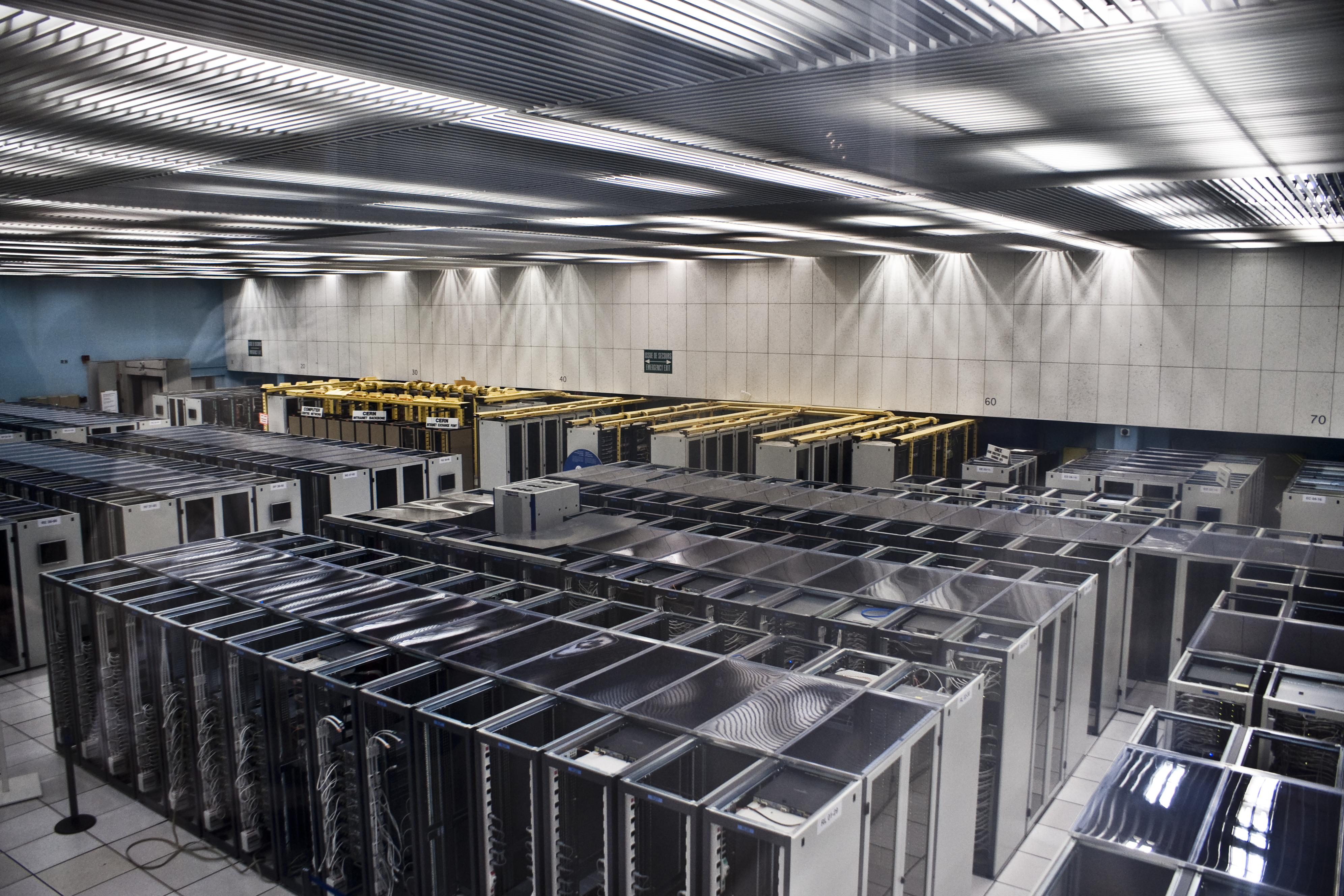“Colby, we’ve decided to contract with your company for a virtual desktop solution.”
“Wow, Mark. I’m glad to hear that. We are excited to get started with you!”
“One caveat, however. We’ll be keeping a couple servers in-house for better administration and easier collaboration. I hope that won’t be a problem.”
“I’m sure we can work something out.”
The hybrid cloud is coming and providing businesses of all sizes a powerful, tailor-made suite of solutions that leverage the best of both cloud services and in-house IT assets. What does it mean for your business today and in the future?

Combining in-house servers with cloud services gives organizations custom solutions.
Image courtesy of Wikimedia Commons
What is the Hybrid Cloud?
Basically stated, the hybrid cloud is when organizations combine in-house IT resources with cloud solutions and platforms to create a best-of-breed solution customized to their specific needs. Some organizations have existing technical architecture and applications that they are understandably resistant to move entirely into the cloud. At the same time, some available cloud solutions simply make too much sense to keep on site. Both cost and learning curve factor into decisions about what applications and data to put in the cloud versus what will stay on site. In many cases, the cost of a cloud service is so low in comparison that it makes more than enough sense to move to a hosted application. In other cases, change is complicated and training can be substantial, so staying with the status quo is the best decision. The hybrid cloud is about mixing both on-site IT solutions with efficient cloud solutions to create a total solution that works best for the organization itself.
Benefits of a Hybrid Cloud
The hybrid cloud gives organizations flexibility and control over their IT infrastructure in a way that isn’t available when choosing just cloud solutions or just in-house assets. It would be unwise to operate a business in today’s day and age without embracing the power and cost savings available in the cloud. At the same time, it would be unwise to burden employees and team members with change and new processes just to save a little money in a cloud solution.
A hybrid solution across an organization allows IT administrators to mix application utility with control and administration. Many cloud services don’t provide the administrative and (more importantly) security controls that many businesses require. Furthermore, cloud services are largely immature in the sense that integrating them with other cloud solutions can be complicated or outright impossible.
In-house solutions allow control for administrators not often available in cloud solutions. Furthermore, most established businesses have already invested capital in in-house servers and software that are still useful and relevant. Transitioning away from infrastructure that is getting the job done already just for the sake of change would represent an error in judgement.

Cloud solutions are on the rise. How do they fit with existing hardware?
Image courtesy of Gartner Research via Cisco
Practical Uses of a Hybrid Cloud
Combining in-house and existing solutions with cloud services allows businesses of all sizes to leverage a variety of systems to achieve optimal results. For example, a construction company might utilize cloud-collaboration tools to share build files and plans so a job goes off smoothly whether they are in the office or in the field. At the same time, that same construction company can host Timberline and AutoCad on in-house servers for high speed performance in the design and revision process before sharing those files. Another example comes in the form of a bookkeeping firm that utilizes an in-house Quickbooks server to work with non-public client financial data in a secure environment. Then, that same firm can use cloud productivity applications to share that data with clients and regulators.
What It Means for Your Organization
Most organizations curious about cloud services are already moving towards a hybrid cloud solution, even if they don’t realize it. The reality is that the hybrid cloud is a natural part of the transition from in-house IT solutions to Software as a Service. For many organizations, it would be nearly impossible to cut the cord on in-house processes all at once. An orderly transition is most practical and, most often, that transition is always evolving in a way that blends the best of in-house, already purchased systems and software with new and more efficient solutions in the cloud.
Don’t be in a hurry to move strictly to the cloud when the assets you have in house (and the expertise of your users) would be disrupted by an abrupt change. Combining both options most often leads to the best solution available….the hybrid cloud. Click here to learn how Mosaic NetworX can help your organization combine in-house solutions with new cloud services for your own private cloud!




